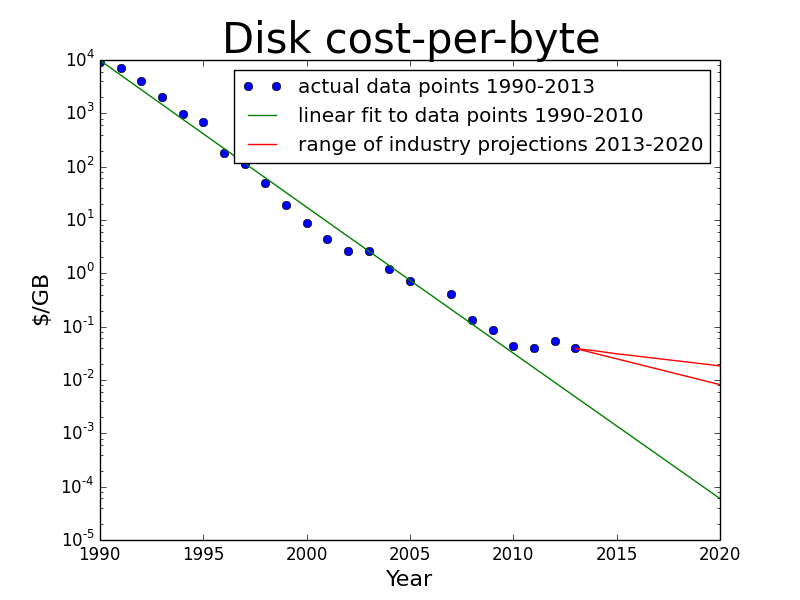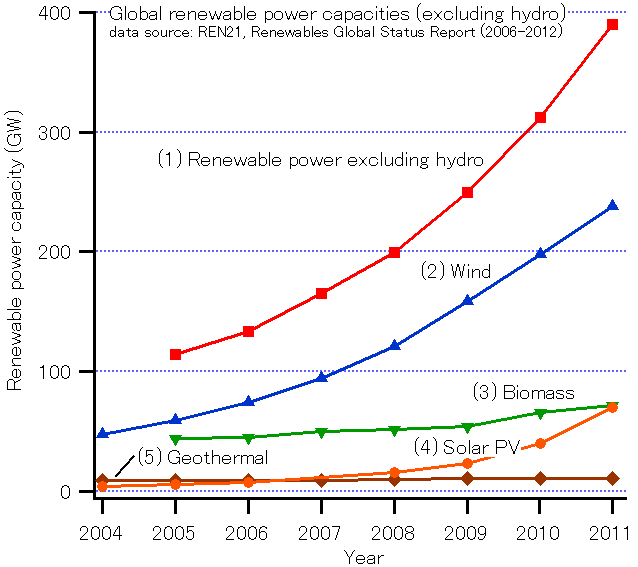Graphs and Motivation
In the first chapter we spent time discussing various aspects of graphs and plots. We talked about looking first at the labels on the axes to understand what information was being presented. We explored the important differences between linear scales and log (logarithmic) ccales. We also noted that on every plot it is important to consider the meaning of the slope of the data and/or the area under (or within) the plot. Sometimes only one of these features is meaningful and sometimes both, it just depends on the plot. Finally we talked about the meaning of averages and why they are useful and how they can sometimes hide important ideas. These problems will ask you to apply these understandings to graphs in the first chapter as well as some other graphs I give you.
1) Figure 1.2 is on page 5 of the text (Motivation chapter).
- What are the units (dimensions) that are being used on each axis?
- What is the highest daily volume of oil produced by the United Kingdon during the time shown on the graph?
- What is the highest daily volume of oil produced by Norway? Be careful when you look at the graph, it's a little tricky.
- What year is the highest production for Norway?
2) Consider the following plot of the cost of memory for our computers and other digital technology.

- What are the units (dimensions) that are being used on each axis?
- Are the scales linear or logarithmic? Which?
- Is the cost/GB rising or falling?
- What was the cost of for 10 GB of disk memory in 1995? ....and in 2010? You will need to do more than just read a number off the graph to answer these.
- What important difference does this graph indicate between the costs before 2010 and those after 2010?
3) On page 7, figure 1.6, there is a graph that shows the population of England and Wales between 1600 and 1900.
- What is the slope of this plot in 1700? You will need to understand and use the mathematical definition of the slope.
- What are the units of the slope you calculated? Why is this called the population growth rate?
- What is the population growth rate, in England and Wales, around 1875?
- How are these two growth rates different (by how much?) and what explanation can you offer?
4 Consider the plots of CO2 production per person on pages 11, 12, and 13 in Chapter 1.
- What is the average CO2 production per person for North America? What is the average for South Africa?
- The average production of CO2 in South Africa is what percentage of average world production per person?
- What percentage of the total CO2 production for the world (not per person!) is produced in Asia?
- What is the ratio of the total CO2 produced in the US to the total CO2 produced in China?
5) Here's another graph that is related to what we will be looking at this term.

- What are the units (dimensions) that are being used on each axis?
- Are the scales linear or logarithmic? Which?
- Is the production of energy by renewable sources rising or falling?
- When did we hit 200 GW of renewable energy production?
- What is the rate of growth of renewable energy production between 2009 and 2011?
- What does this growth rate suggest our power production capacity will be in 2020?
